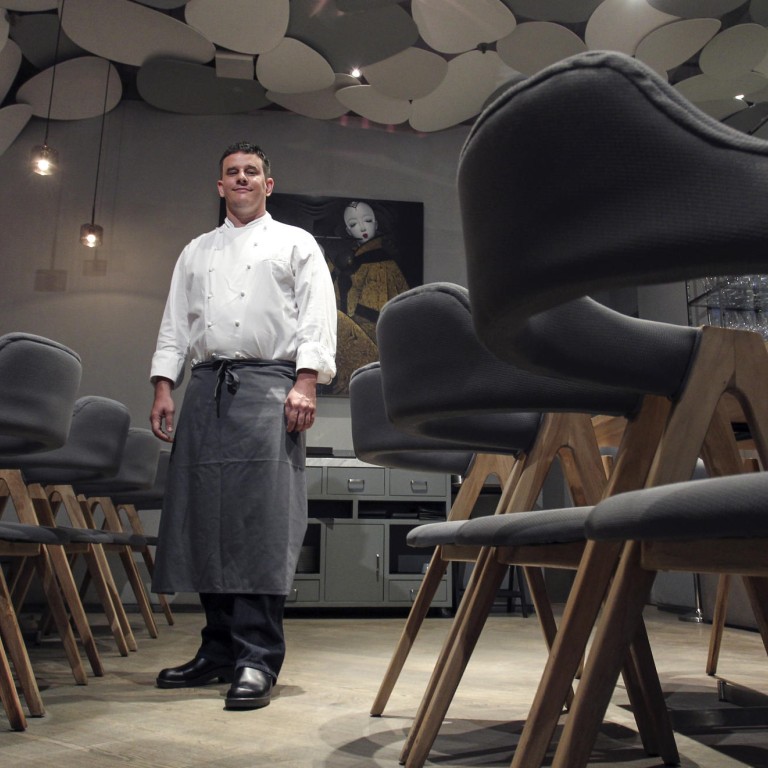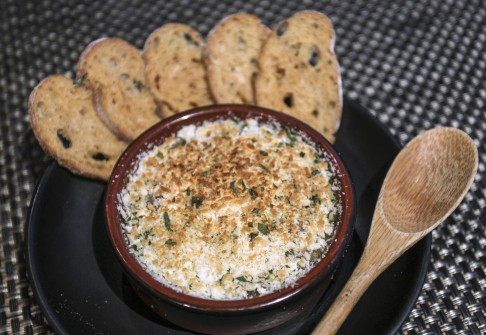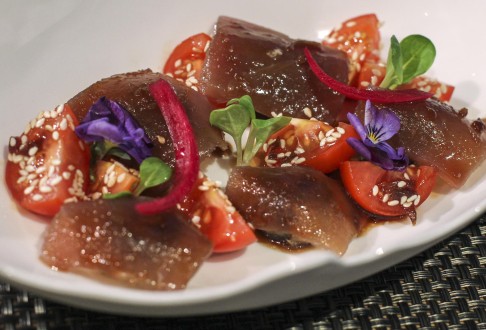
Bistros are booming in the city
As French chefs put a fresh spin on this relaxed style of dining, we explore their humble origins
Surprise is the word of the day at Upper Modern Bistro, after the venue gained a star in the latest Michelin guide rankings.
Given that chef Philippe Orrico used to work at Pierre when that restaurant had two stars, and then gained a star of his own at St George in Hullett House, is this feeling of surprise misplaced? Perhaps not.
Notwithstanding the chef's talents, bistros are not usually considered to be worthy of the attention of Michelin inspectors.
In the traditional hierarchy of French restaurants, the bistro is at the bottom of the ladder. Its close relative, the brasserie, is next up the list. If Upper Modern Bistro was like most other bistros, it would be like giving a star to a cha chaan teng.
The French word "bistro" is most likely an abbreviation of bistrouille, a coffee with a shot of brandy. Other accounts say the word comes from the Cossacks who occupied Paris in 1815 after the defeat of Napoleon Bonaparte - they would shout the Russian word "bistro" meaning "quick" when they wanted service.
However, the word was first recorded in French in 1884. It's possible the name comes from bistreau, a cowherd who's said to be jolly, as that's how an innkeeper should be.
The number of bistros and brasseries in Hong Kong has grown in recent years as fine dining wanes, and more French chefs are coming to the city. Upper Modern is a year old, and has been joined on the dining scene by Jules Bistro in Happy Valley, which officially opened at the end of October.
If it's hard working out the difference between a bistro and a brasserie, it's not just because local restaurateurs are vague. French chefs also have to think before defining the concepts.

Whatever the origin of the word, there's no disputing that bistros and wine have always gone hand-in-hand. At first the food was there to mop up the rough wine served in or small jugs. The choice was the patron's red or white.
Typical bistros had a maximum team of five - two or three in the kitchen, and two front-of-house serving the now-classic dishes.
That small team meant the place could only open at lunch and dinner, and offer a fixed-price menu. This often changed daily, and had the prices written on a blackboard.
Orrico says that the pleasure of eating in bistros is that they give real insight in to local specialities. The main regional variations are between Alsace places offering menus heavy on sauerkraut, potatoes and sausage, and bistros in the Lyons style (often called Bouchon).
The latter offer plenty of charcuterie, the poached fish dumplings called quenelles, brawn and variations on blood sausage such as boudin.
That's not to ignore the pork or duck pâté-like rillettes of Le Mans - "a great way to use leftovers", says Orrico - or the Bordeaux style of bistro. It's a given that in Bordeaux, you can expect many dishes to be cooked in red wine.
Brasseries serve the same food all day long: simple, very classic dishes
But you can also expect plenty of freshwater fish, such as eels and elvers. The Bordelaise also seem to like their bone marrow. Cheeses are likely to be local, while desserts are often custard-based dishes such as crème caramel or - meringues poached in milk floating on a custard base.
What takes the brasserie an extra rung up the ladder is the amount of seafood dishes that it serves, says chef Frank Lebiez of the Metropolitain in Sai Ying Pun. He says the key difference between brasseries and bistros is the seafood trolley that's often found at the entrance to the former. Then he adds a few more distinctions.
Although brasseries are very close to bistros, the former started as brew pubs, offering food to go with the local ale. They have evolved to become more high end, often with the white tablecloth service of a fine dining restaurant. But they still have traditional dishes that don't call for individual creativity on the part of the chef.
"Brasseries serve the same food all day long: simple dishes, very classic, and very close to bistro food," says Lebiez.
Still, service was a touch more theatrical. Many dishes used to be made tableside, such as mixing steak tartare to the diner's preference, or carving roast chicken. There was a lot of flambé action going on as well, with dishes flamed in alcohol such as game or crêpe suzette.

While Metropolitain certainly has plenty of seafood on the menu - salmon tartare, salmon paupiettes, scallop carpaccio, mussels - Lebiez says that to make it a classic brasserie it would "need a seafood corner and to be three times the size".
Metropolitain is a Parisian take on the brasserie concept, meaning that dishes can come from all over France. The cheeseboard has Comté from eastern France, Bleu d'auvergne, pave from Nantes on the Loire, Brique Majeanne from further south in the Loire valley and Couer de Neufchâtel in Normandy.
Desserts don't differ too much from bistro classics either - apple tarts, crème caramel, profiteroles, chocolate mousse and the classic Paris-Brest cake.
Other brasseries, as with bistros, have their regional variations, most notably the Alsatian variety, serving sauerkraut and sausages.
It was an influx of refugees from Alsace to Paris in 1871, after the Germans took the region in the Franco-Prussian war, that saw brasserie culture reach new heights in Paris. Ornate interiors, decorated in art nouveau-style hosted playwrights, artists, poets and intellectuals in a heyday that lasted until 1940.
While some classic sites remain, the modern brasserie is reviving the beer focus of the concept's historic origins. So-called Belgian bars serve up to 300 styles of beer, according to the .
At Metropolitain, the wine list is long and mainly French. "We have loads of seafood and rib-eye steak, we need wine to match it," says Lebiez.
The wine at Upper Modern bistro is chosen by the chef-patron, but there is also certainly more choice than red or white. It's typical of how Orrico has evolved the bistro, to meet the expectations of a Hong Kong audience and also to match his own ambitions.
Orrico says that the idea for the bistro came from a dish he created first: pigeon with tuna. The meat is given a European treatment, but the fish is cooked in an Asian way, marinated in a teriyaki sauce. As Orrico has access to ingredients from around the world, he uses them.
He has also updated some plates, such as the classic bistro pig's trotter. This is usually cooked by rolling the trotter in mustard and breadcrumbs and then pan-frying it.
Orrico takes the meat off the bone, and flavours it with mustard and cumin before gratinating under a layer of mustard and breadcrumbs. The old version is "a bit heavy," he says. "I'm a good eater but one would finish me off."
While many dishes are lighter, the chef isn't afraid to put a dish of foie gras crème brûlée on the menu. As for being a neighbourhood place, "It is for lunch and brunch. For dinner, it's destination dining," Orrico says.

